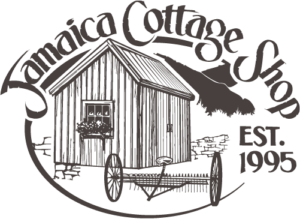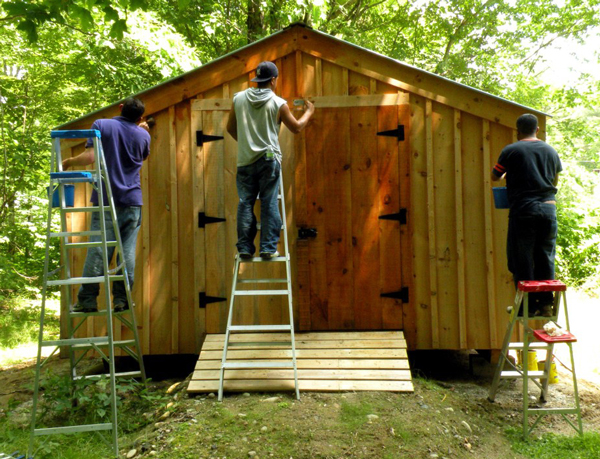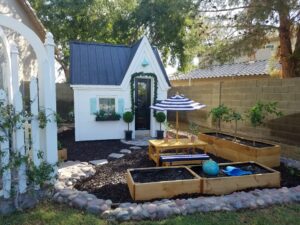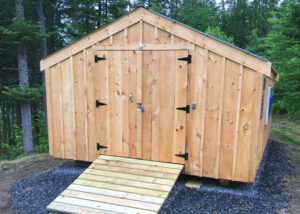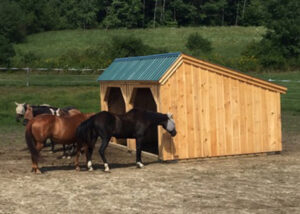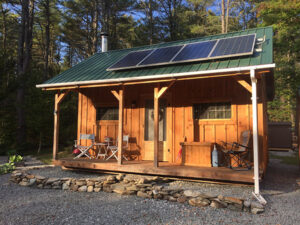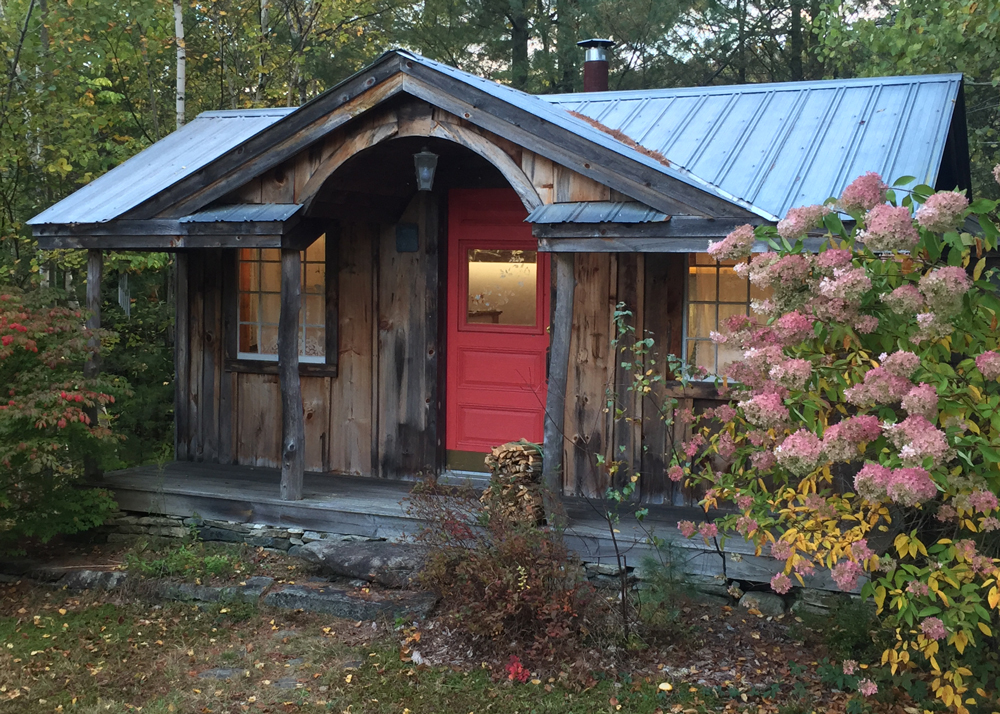
Once you have your mind set on your next building project, whether it’s a tiny house, deluxe shed, or large, two-car garage, you will need to figure out how to pay for it. If you, like many, are someone whose pockets aren’t overflowing with cash it is still possible to reach your post and beam building goals. All it takes is some creativity, planning, patience, common sense, and time. But there are also a number of budgeting tricks, and hacks that can get you ahead of the game. We’re sharing with you our top tips for financing a new building. Try putting all, or just a few, of these tips into practice and you might end up with a Jamaica Cottage Shop village in no time!
1. Automate Your Savings
Setting up a savings account is a no-brainer, but we are all tempted to spend our paychecks on new clothing, electronics, cars, and restaurants on top of our usual bills. Moving a portion of your funds into a savings account makes spending that money a little less convenient. It forces you to think about frivolous purchases, since you probably have to take a few more steps to access that money. Most banks have systems where you can transfer a set dollar amount on recurring days. Have your bank account transfer money into your savings account every payday: we suggest trying to put away 10% of your income into your savings account. If that big a percentage sounds daunting, start with a smaller amount. A little is better than nothing, and maybe seeing your savings grow over time will motivate you to put away more!
If you are lacking in the willpower department, you might consider opening a secondary bank account at an online bank. That money will be out of sight and out of mind. Plus, it will be even less convenient to make withdrawals since a transfer to your main checking account will probably take a few days instead of a few minutes. If you think this is a good option, make sure you compare banks beforehand and choose one that offers the highest interest savings account you can find!
2. Start With the Small Stuff

One way you can budget your build is to figure out how to minimize your upfront costs and expand your project as you go. Pick out a smaller design, or get a stripped down version. Some people opt to start with a small shed, for example. They might camp out in that while they are saving for a Vermont Cabin. Later on, when they move into their larger home, they can rent out their backyard cottage to pay off their projects.
Another idea is to try starting with a three season structure instead of buying a fully decked-out, turn-key cabin. Then you can buy insulation, interior wall sheathing, ceiling sheathing, and insulated windows. These items add up, but can be more manageable if purchased as needed. We also sell frame-only kits, which include the framing material. Buy siding, roofing, floor decking and doors as you go.
3. Half Now, Half Later
Did you know that we can get your project into production with a 50% deposit? This is an excellent option if you have most of the funds needed to get started, but need a few months to get the rest. The remainder isn’t due until right around the delivery time. Having a deadline can be very motivating for earning cash or finally getting around to applying for a loan. Contact our sales team. They can take your deposit over the phone.
4. Take Advantage of Supply and Demand
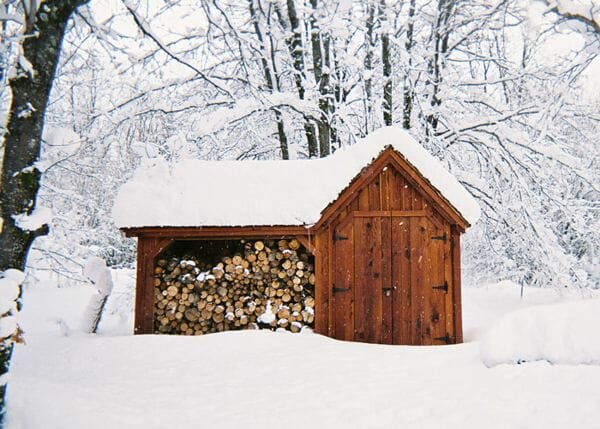
Changing seasons can mean savings! You may find that you can get great deals if you buy during the winter. This is because the demand drops quite a bit when the weather is chilly. People simply aren’t as enthusiastic about starting outdoor projects when there is snow on the ground. Past patterns show that winter pricing on kits and prefab sheds is usually the lowest during the cold, snowy months. When spring rolls around, everyone is eager to get started on their projects. This means pricing for materials goes up and so do labor costs to pay employees’ overtime.
5. Follow Our Promotions
The best way to keep up to date on our sales is to join our Funky Chicken Newsletter. That’s going to be the first, and in some cases only, place where we are going to publish new sales, discounted items, and coupons. Our Facebook business page will also be a good resource. If you don’t want to get emails from us, you can bookmark our sale flyer. We update that link every couple of weeks, so you can always peek at that to get pricing on our kits and fully assembled designs.
6. Barter for Services
In many places, you might be able to trade services you offer for painting, carpentry, plumbing, and electrical work. Someone who owns a construction business might need someone to design their business cards, or an electrician might be searching for someone to do some landscaping around their property. It might be hard to find people willing to do this, so look for community groups specializing in time trading.
7.Bribe Your Friends and Family with Pizza
If you are buying a kit, you might be able to have a barn building party with your friends and family. Offer a tasty meal and fun music to entice your social circle to help. This could save money on carpentry costs. Just don’t forget to return the favor if they ever need a hand.
8. Apply for a Grant
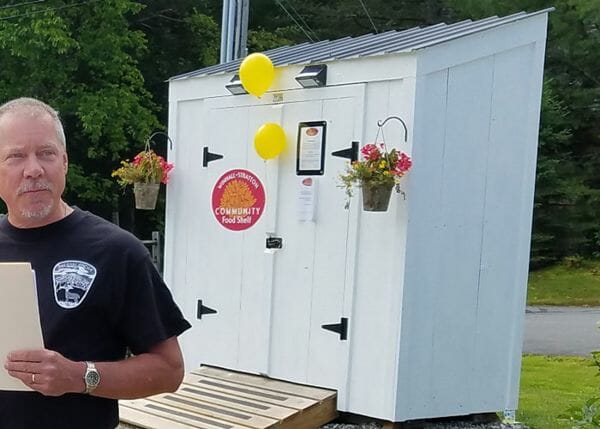
If your building will be shared with your community, or you’re constructing it for non-profit use, you may be able to apply for funding. For example, if you are setting up housing for Veterans, you could get involved with non-profits that focus on affordable housing. Energy-efficiency grants may also be available for homeowners who need help weatherizing their houses. While this won’t necessarily pay for a building kit, it could take care of an expense that is holding you back. You can try searching a grant database if you don’t know where to start or check your state’s official .gov website.
9. Use a Credit Card
We wouldn’t say that this is a top tip, but there can be some pros when using a credit card, especially if you are savvy with money. Putting a big purchase on a new credit card that has a 0% interest term with no fees can help you delay the costs. If the card also comes with a good cashback program, you can use those rewards to pay for things you might need for your cottage or shed later on. Make sure you can sustainably make monthly payments, and plan ahead for when the 0% interest period expires. That’s the time when you’ll want to pay off the bulk of your purchase. If you aren’t careful with remembering the final pay off, you could end up in debt! We recommend this option for people who have predictable incomes and can budget to make sure they have enough saved at the end of the 0% interest period to make a large payment.
10. Utilize Our Financing Partners
We’ve partnered with a handful of companies that offer solutions for purchasing fully assembled buildings and Pre-Cut Kits. You can finance some, or in many cases all of your project by working with these partners. If you are in the process of improving your credit score, the rent-to-own option will make it possible to purchase a fully assembled building without a credit check.
Conclusion
Our community is made up of people from all walks of life, and they are some of the best resources we have for finding clever ways to finance post and beam buildings. We hope that these budgeting tips will help you on your path to building the cottage, shed, garage, or tiny house of your dreams. Let us know if you have other tips for budgeting your project that we can pass on to our readers. It’s our mission to make our products as attainable and accessible as possible to everyone!

